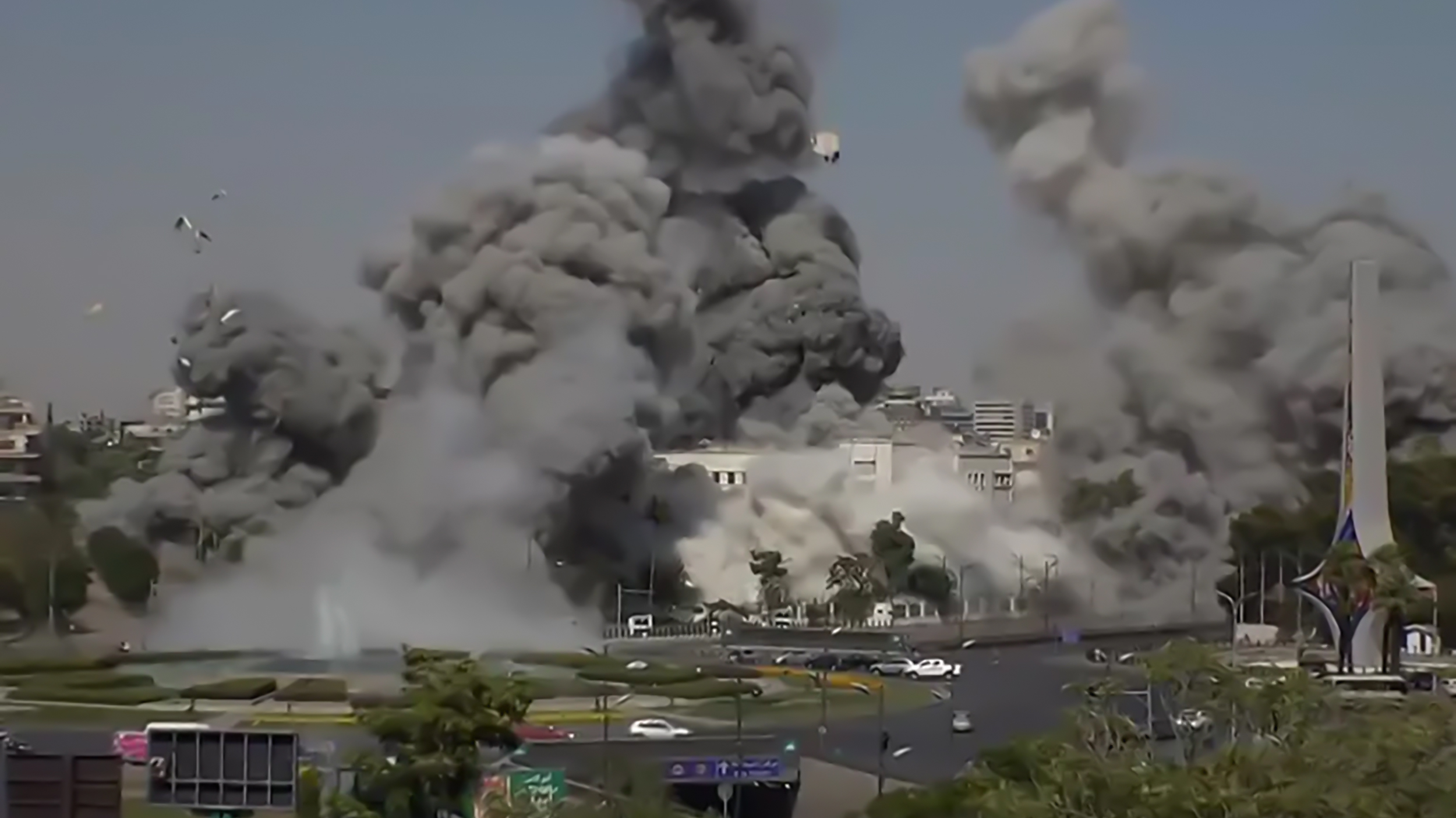
Introduction
On 13 July 2025, clashes erupted between Druze and Bedouin communities in Syria’s Suwayda province, triggered by an armed attack—allegedly by Bedouins—on a vegetable truck along the Damascus–Suwayda highway. The violence quickly escalated into deadly confrontations, culminating in an Israeli military strike on Damascus itself, under the pretext of protecting the Druze and pressuring the Syrian army to withdraw from Suwayda.
This escalation came despite the new Syrian government’s tendency to avoid confrontation with Israel, and despite Washington’s public support for the post-Assad regime—lifting sanctions and promoting its integration into the region’s “peace accords”.
Regional and international diplomatic efforts resulted in an agreement, backed by Jordan and the United States, that included a ceasefire, the redeployment of Syrian security forces in Suwayda, the release of detainees by all parties, and the entry of humanitarian aid. However, the agreement remains fragile due to Israeli interference in Syria’s internal affairs and its claim to the right to protect the Druze minority.
This commentary aims to explain the context behind Israel’s intervention—and where it may lead.
Context
There is no guarantee that tensions between the Druze and Bedouins in Suwayda will subside or not reemerge. The conflict is not rooted in opposition to the Syrian state, but rather in longstanding historical rivalries between the two communities that flare up periodically. Resolving such disputes requires the intervention and oversight of the Syrian state, which must act as a unifying authority for all its citizens—regardless of how individual groups view the new leadership.
On one hand, some Druze in Suwayda have turned to Israel as a potential protector, possibly seeing it as an alternative to the current regime. This risks turning a local conflict into a deeper crisis, eroding trust between Druze factions and other national groups. On the other hand, the unrest is exacerbating tensions between the Druze and their neighbours, with potential implications for Druze communities elsewhere in the Arab world.
Israel’s military escalation against Damascus can be interpreted through two main lenses:
First, and more directly tied to recent events, Israel claimed to be under pressure from its domestic Druze population, and reportedly conveyed these concerns to Syrian officials. It justified its intervention as an act to protect the Druze in Syria—viewed as a religious and social extension of the Druze minority within Israel. That community plays a visible role in Israeli politics and the military, especially as Israel conducts simultaneous wars in Gaza, the West Bank and along the Lebanese border.
The conflict with Hezbollah escalated on 27 July 2024, when Israel accused the group of targeting the Druze town of Majdal Shams, resulting in a massacre—an allegation Hezbollah strongly denied as false.
Israel appears eager to maintain the support of its mainline Druze constituency, particularly amid ongoing war. This group is represented by Muwaffaq Tarif, the “spiritual leader of the Druze community in Israel”, who said: “What happened on 7 October is now happening in Suwayda,” and called on Israel to intervene in Syria.
This position builds on the historical “blood alliance” between Israel and the Druze, based on extensive Druze participation in the Israeli military in exchange for greater recognition and influence within the state.
Strategically, this dynamic serves Israel’s regional ambitions. By portraying itself as the protector of Druze populations in Arab countries, Israel builds a rationale for intervening in neighbouring states and expanding its presence in border regions—especially areas like Mount Hermon and its surroundings, where the Druze are a key demographic. Israeli Prime Minister Benjamin Netanyahu recently stated that Israel’s intervention in Suwayda laid the groundwork for a “demilitarised zone” stretching from the Golan Heights to Jabal al-Druze—a long-standing Israeli objective since the fall of Bashar al-Assad’s regime, and part of broader efforts to expand a buffer zone in southern Syria.
Second, there is a broader, longer-term strategic context. Israel’s military doctrine of the “campaign between wars”, developed during the Syrian revolution (2011–2024), focused on weakening Iran-aligned forces while steadily undermining Syria itself. The goal was to keep Syria fragmented, militarily degraded and politically isolated, preventing it from recovering or unifying.
At the same time, Israel worked to weaken the Syrian opposition, preferring the continuation of a weakened Assad regime over the emergence of a stronger alternative government.
Following Tufan al-Aqsa and Israel’s war with Lebanon, a new regime took power in Damascus. Israel initially appeared to accept the new government, seeing it as either hostile to Iran or at least independent from it. This raised hopes that Israel might abandon its strategy of weakening Syria and pursue a more pragmatic approach—possibly a security arrangement under the 1974 armistice or something broader.
However, Israeli concerns persist—particularly over Syrian President Ahmed al-Sharaa’s Islamist background. After Assad’s fall, Israel launched widespread strikes targeting Syrian weapons depots, military infrastructure and leftover regime bases, aiming to prevent them from falling into the hands of the new government. It also expanded its control in the border region, including parts of Mount Hermon.
Given the scale and intensity of the recent Israeli strike on Damascus, which targeted the Ministry of Defence and the area around the presidential palace, it is difficult to conclude that Israel has truly abandoned its strategy of weakening Syria. It may still be pursuing that goal, albeit using new methods and justifications. In fact, Israel may be aiming to weaken or even topple the new regime.
But continuing this approach undermines the de facto gains Israel has made. It also clashes with US and Arab efforts to draw Syria into the “moderate camp” and involve it in regional security frameworks, or even future peace talks. Moreover, it contradicts the broader goal of containing Iran and its allies, especially since Assad’s Syria was the central link in that axis, facilitating Hezbollah’s armament and connecting Tehran to Beirut.
At present, Israel seems to be pursuing contradictory aims, simultaneously seeking to weaken Syria while expecting it to control its borders. The current Israeli government appears undecided about its long-term position toward the new regime and unwilling to commit to either cooperation or confrontation.
On a wider regional level, Israel’s posture appears to also target Turkey—the main supporter of the new Syrian leadership. Israel has previously blocked Turkish attempts to establish a military foothold in Syria. Now, in addition to trying to undermine Iran’s influence, Israel seems intent on weakening Turkey and opposing Turkish President Recep Tayyip Erdoğan’s regional agenda.
Erdoğan has openly rejected Israeli policies and denounced its far-right government. This friction can be understood within the broader context of the Gaza war, where Israel is attempting to reassert regional deterrence after the shock of Tufan al-Aqsa.
Most likely, Netanyahu is manoeuvring across multiple fronts to externalise his domestic political crises. Ending the war without a major victory—or without guarantees that protect his government—would expose him to legal and political consequences and potentially end his career.
Possible trajectories
There are three main factors that will shape the direction of developments in Suwayda—and in Syria more broadly:
First, Israel’s involvement, which is the most destabilising factor. The more it withdraws from Syria, the more likely Syria can recover. The more it interferes, the higher the risk of fragmentation and civil conflict. As long as the war in Gaza continues—and with the possibility of a renewed front in Lebanon—the risk of spillover into Syria remains high.
The new Syrian government views the current Israeli leadership as a war cabinet, unfit for serious negotiations or lasting agreements.
Second, the trajectory of US–Syria relations, which will have both positive and negative impacts on Syria’s regional role, its place in future peace efforts and its participation in regional security arrangements. US President Donald Trump is keen on securing foreign policy achievements, and the reintegration of Syria is one of his key successes. Syria’s renewed rapprochement with the Gulf and its openness to an Arab-led peace process reflect this momentum.
Third, the policies of the new Syrian government—both in terms of internal governance and its relationship with diverse sectarian and political groups. The government has prioritised lifting sanctions and rebuilding regional ties, receiving varying levels of support from Turkey, the Gulf and the United States—all of which have a vested interest in Syria’s unity and stability.
However, serious domestic challenges remain—chief among them the minorities file, asserting full control over national territory, and unifying the military and security apparatus.
Syria’s slow economic recovery, coupled with ongoing suspicions about the background and intentions of the new leadership, has hampered public trust. These doubts intensify whenever the regime faces a crisis—such as during the reassertion of control over Damascus, which raised questions about the application of sharia law and the exclusion of extremists and foreign fighters.
Fourth, the broader Arab and Turkish position. A joint statement from the Gulf states, along with Egypt, Lebanon and Turkey, expressed categorical rejection of all foreign interference in Syria. This alignment—especially when backed by Jordan, which played a central role in securing the Suwayda ceasefire—will bolster Syria’s resilience. These states all wield significant, albeit varying, levels of influence within Syria.
Conclusion
The events in Suwayda should be seen within the broader context of the sectarian tensions that have plagued the Levant, especially in places where the state is weak and sectarian militias and narratives gain traction.
Given the current regional landscape, Syria and the concerned Arab states possess the capacity to contain and resolve the crisis, particularly if there is an Arab consensus to do so—as appears to be the case now.
However, Israeli intervention risks transforming what is essentially a local sectarian issue into a regional one, linking it to broader geopolitical frameworks and reshaping the regional order. Over time, such intervention could expand into broader encroachments on borders, particularly in Syria and Lebanon, in pursuit of greater Israeli influence in the Levant.
That said, Israel faces a dilemma. Changing the status quo in Syria will likely reverberate across the region. It may ultimately harm Israel more than benefit it. The Syrian army’s withdrawal from Suwayda has already dealt a blow to the new regime’s credibility and may weaken its political and security control over Damascus. It could also hinder efforts to reunify the country, most notably negotiations with the Syrian Democratic Forces (SDF).
Weakening the new regime may destabilise not only Syria, but the region as a whole in both the short and long term. A fragile Syria may lose its ability to control its borders, opening the door to renewed chaos. In either case, the chances of a return by regional actors, particularly Iran and armed factions, will rise; and that is precisely the scenario Israel says it seeks to avoid.
If Israel insists on pursuing a strategy of weakening Syria while expecting the government to control its territory, it is setting an unachievable goal—unless it intends to wage open-ended wars to dominate the entire region and all actors within it.
